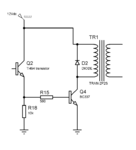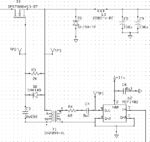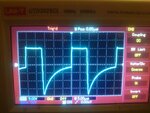badea
Member level 1
Dear Friends:
while trying to isolate a control signals for H-bridge by means of pulse transformers (SIRIO 108020) i got good signals in small duty cycle (lower than 10% @ 30Khz)
but when i raise a duty cycle, output of pulse transformer start to slop e down as shown in pictures
Any idea to solve this problem?
regards
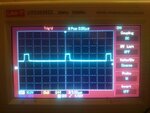
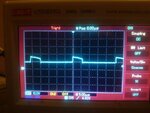
while trying to isolate a control signals for H-bridge by means of pulse transformers (SIRIO 108020) i got good signals in small duty cycle (lower than 10% @ 30Khz)
but when i raise a duty cycle, output of pulse transformer start to slop e down as shown in pictures
Any idea to solve this problem?
regards


